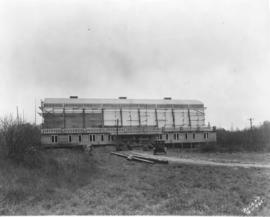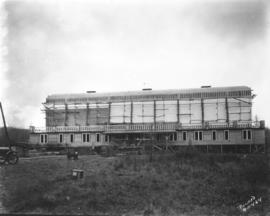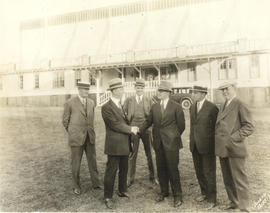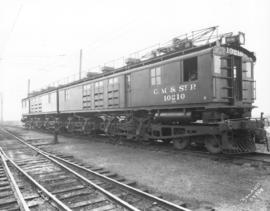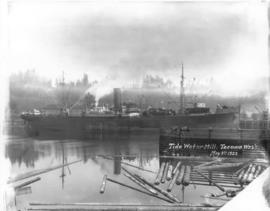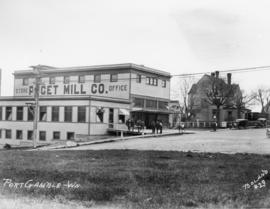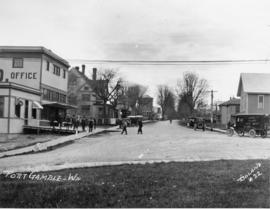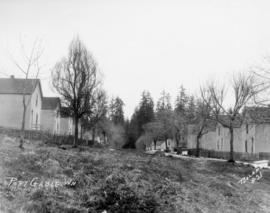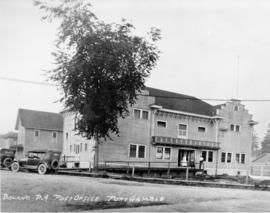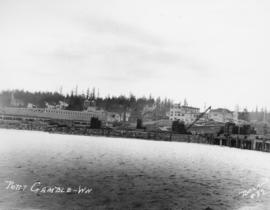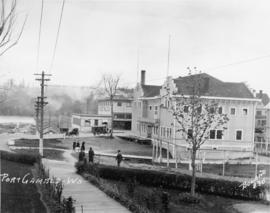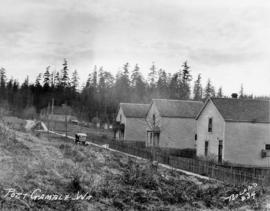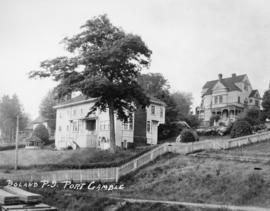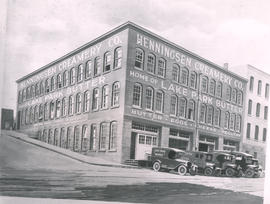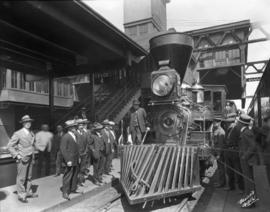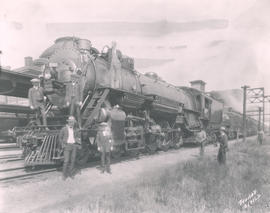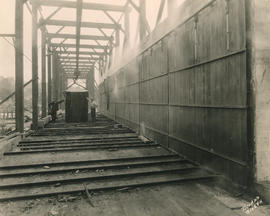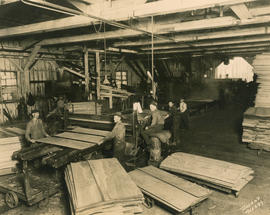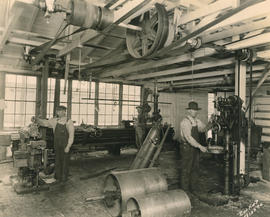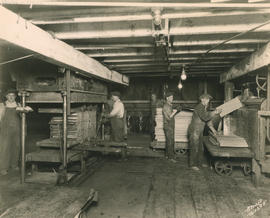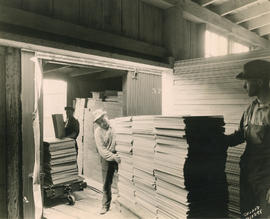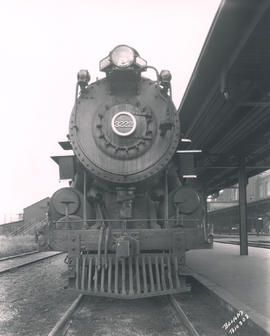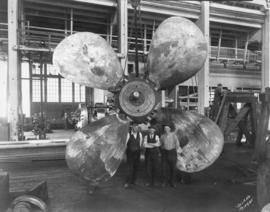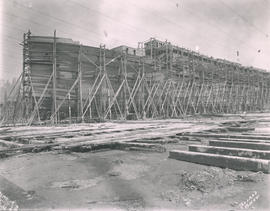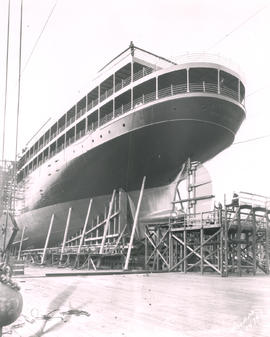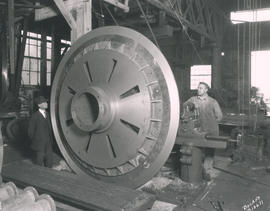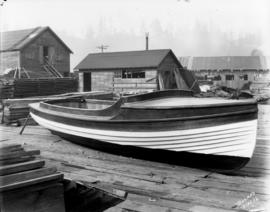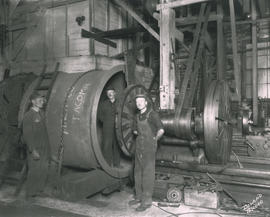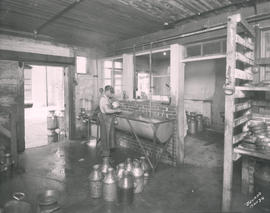- Item
- 1924-12-04
Part of Marvin Boland Photographs
H.C. Weaver Productions motion picture studio under construction on December 4, 1924. One car is parked on the grounds of the construction site; studio was located on 5.5 acres near Titlow Beach. The formal dedication of the first motion picture studio in the Northwest was scheduled for December 14th, ten days after this photograph was taken. The $50,000 studio, constructed by the firm of Albertson, Cornell Bros. & Walsh, was not yet completed. Scaffolding is still in place on the walls of the main building which would be built sans windows. The lower structure in front of the main building would be the administration unit, containing executive offices, projection room, dressing rooms for the stars and extras. The studio would be 105 ft by 180 ft with a 52 foot ceiling. It would have the largest floor in the Northwest without supporting pillars. Only two larger floors were available, both in Hollywood. Weaver was one of a handful of independent studios capable of handling all aspects of film production, including developing and titling. The studio closed after only four years of operation in 1928; the building was converted into a dance hall in 1932 but was destroyed by fire on August 24, 1932. (TDL 11-9-24, E-8, 12-14-24, B-1) Boland-B11465, BU-13758, TPL-8181
H.C. Weaver Productions, Inc. (Tacoma); Motion picture studios--Tacoma; Building construction--Tacoma--1920-1930;
